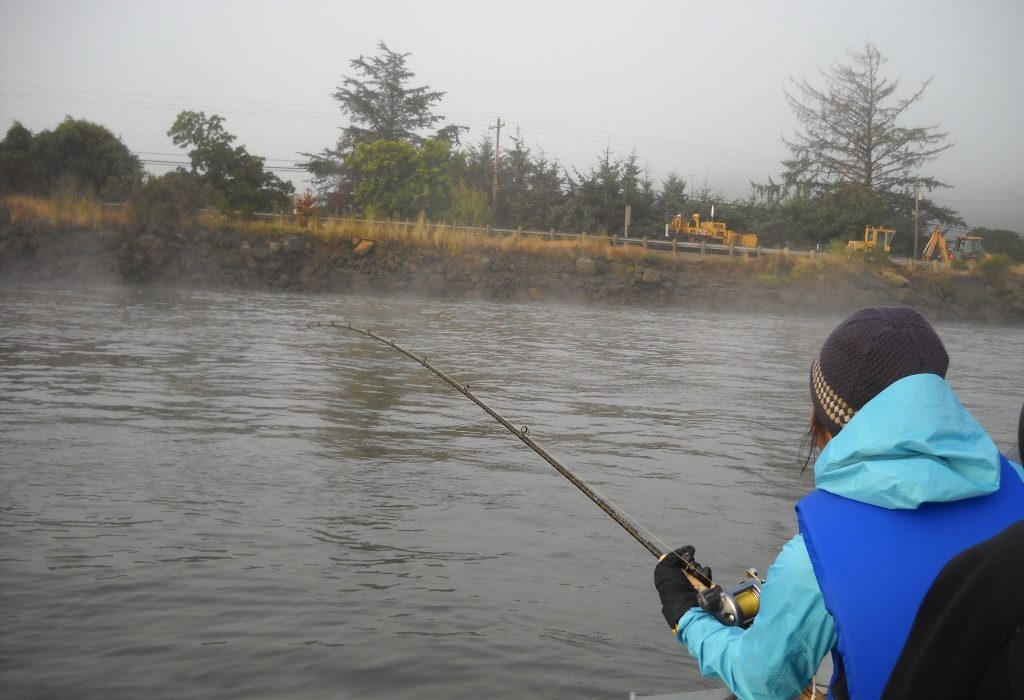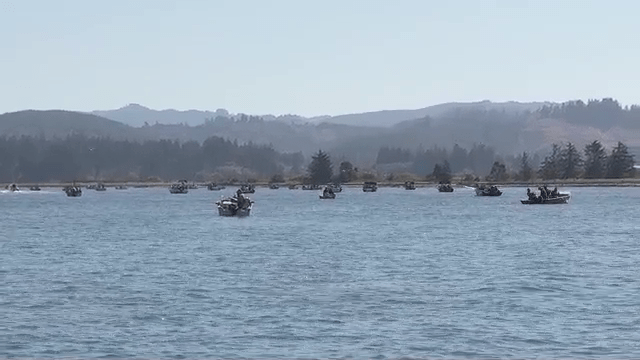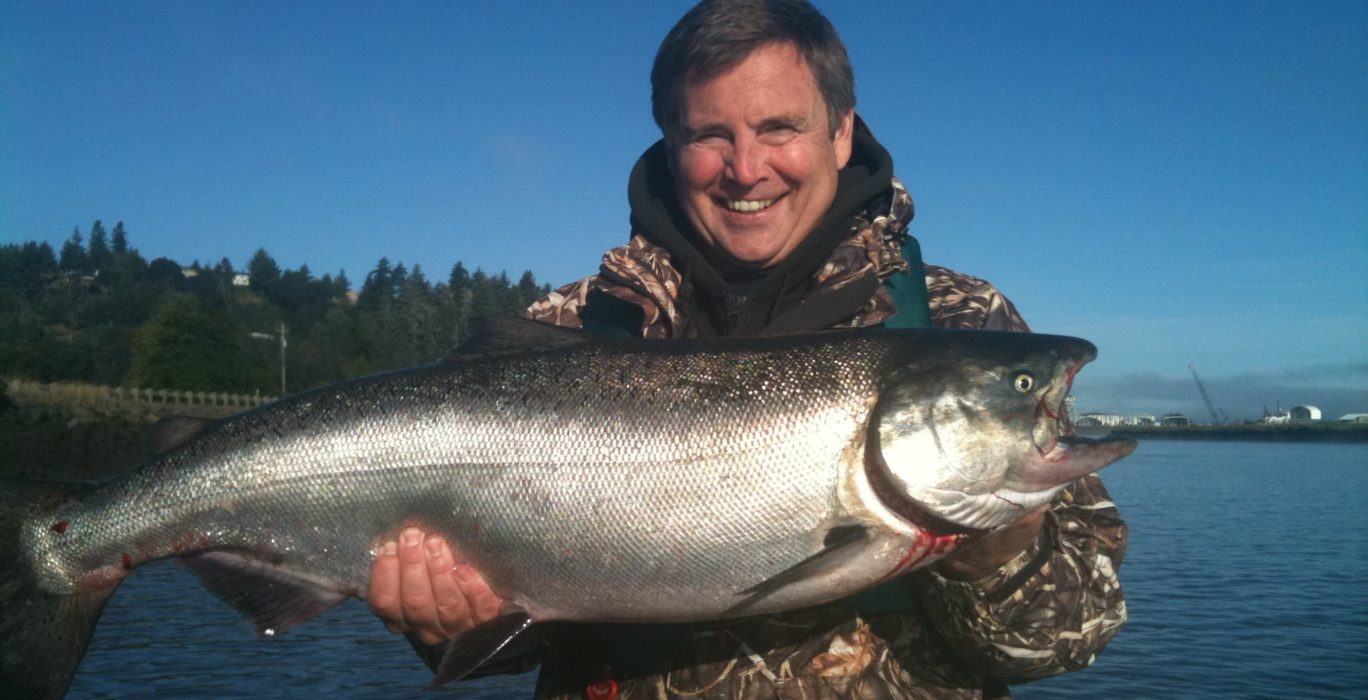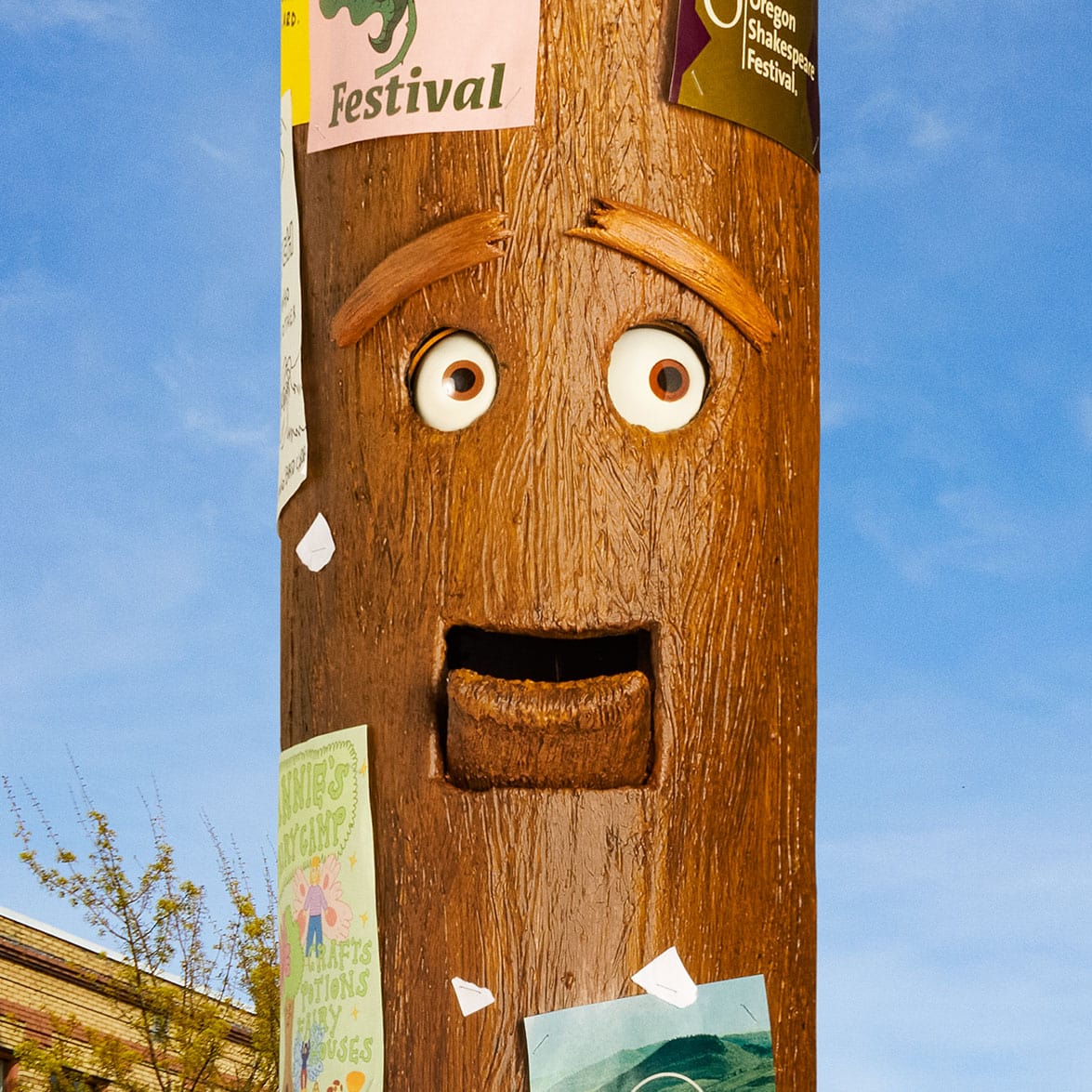If you spend much time traveling across Oregon this month, you will begin to see and feel the early signs of the changing seasons. For me, one of the surest signs of transition from summer to fall is the many places you might cast a lure or drift bait for salmon along coastal Oregon. There’s a unique fishery on the Southern Oregon coastline at Coos Bay, where a community’s determined effort and strong commitment has made a difference in restoring a nearly extinct salmon run.
Coos Bay’s waterfront streetlights sparkle when you join longtime guide Rick Howard on a first light fishing trip in September. It takes only a few minutes of travel across the smooth estuary in Howard’s comfortable 25-foot boat to reach the salmon-rich water that is marked by fog-shrouded silhouettes. The silhouettes are fishermen, and with their fishing rods bent over and their nets flying high, they are a sure sign that eager salmon are on the bite.
If you want to catch one, noted the longtime fishing guide, you must prepare a “plug cut” herring for bait, thread it onto hooks that are tied to a five-foot leader secured to a brass swivel with a four-ounce lead sinker. The tackle and terminal gear must be trolled just off the estuary bottom with the falling tide. Or – if you lack the skill and experience – sign up to join Howard for a day on the bay. Then you can watch in awe and admiration as he scans the waterway for safe passage, deftly handles his boat through watercraft traffic and prepare the baited rods for you and your fishing partners.
“Basically, this is where Coos River starts,” said Howard. “These fall Chinook salmon are fresh from the sea and they are coming right here – across the 10,000 acre estuary in front of town. They linger here a bit to make sure this is their home water and it is probably the most productive spot to be fishing at this time of year.”
Oregon Dept of Fish and Wildlife Biologist Tom Rumreich agreed that the downtown Coos Bay salmon fishery is one of the most productive in the state. Rumreich helps guide the local ODFW “STEP” or “Salmon, Trout Enhancement Program” that has brought together thousands of local volunteers, businesses and even school children to raise money, build hatcheries and do the heavy lifting to bring back a basin-wide fall Chinook salmon run.“Our STEP project for fall salmon is unique from the standpoint of how many people work for the common goal of putting more fish here for everyone,” noted the fishery biologist. “There’s great pride in that fact.”
There’s good reason to be proud when you consider the Coos River watershed’s legacy of poor salmon habitat. The habitat was stripped from the streams by old logging practices called “splash damming.” In a splash dam operation, temporary wooden dams collected the logs and then in a heartbeat, the dams were broken open to quickly move the big wood downstream to reach Coos Bay’s lumber mills. The splash dam era began in the late 1800s and didn’t end until 1958. Nearly a century later, Rumreich said the damage to salmon runs was devastating.
But today it’s a different story; more than 3,000 STEP volunteers raise more than 2 million baby salmon each year. The adult volunteers work with school children to help capture and spawn the adult fish; then each spring, volunteers remove the adipose fin that marks each fish’s hatchery origin. The Coos Bay STEP project is not only a hatchery program, but funds and provides manpower for river habitat restoration projects too. The varied projects help restore the rivers so that wild salmon get a boost to increase natural salmon spawning production.
Eric Farm, former Director of the Coos Bay Chamber of Commerce, added that the projects help further environmental education for local students.“Our kids hold the big Chinook in their hands, they spawn the fish, clip the adipose fins off the smolt and send them down the raceway. Those experiences will stick with them the rest of their lives. Our community put their hands into this project and now – after thirty years – we are reaping the rewards of that effort.”
Rumreich added it’s no surprise that the project’s community support has been widespread and remarkable. “People in our community benefit – not only from catching the fish but by the economic boost that comes from fishing gear sales, motel rooms, restaurant meals and so much more. It’s so amazing to see all of these people out here enjoying themselves in a great place, a great community – it’s a uniquely Oregon experience.”



